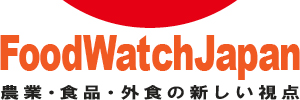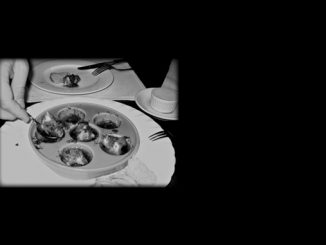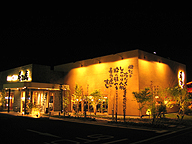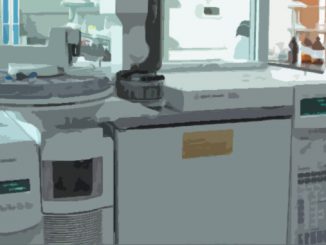
消費者製品の欠陥、あるいは不正表示にからむこのところの問題を受けて、日本の政府は消費者利益を守ることを任とする新しい機関を設けることになった。米国政府も国民の信頼を高めるため1970年代に同様の行動を取った。日本の新しい消費者庁は、2009年9月1日、過去50年で最も歴史的な国政選挙のわずか数日後に発足した。消費者庁の役割は米国の消費者製品安全委員会(CPSC)と同じようなものだが、しかし決定的な違いがある。
Recent incidents involving defective or mislabeled consumer products motivated the Japanese government to establish a new agency charged with protecting consumer interests. The United States government took similar action in the 1970s to enhance public confidence. The new Japan Consumer Affairs Agency (CAA) opened its doors on September 1, 2009, just days after the most historic national election in the past fifty years. Its responsibilities are similar to those of the U.S. Consumer Product Safety Commission (CPSC) but there are significant differences.
消費者庁は、中国製ギョーザの農薬混入事件から欠陥ガス湯沸かし器による事故など一連の問題を受けて2008年福田康夫内閣の折に考え出され、消費者庁及びに消費委員会設置法の下に設立された。食品の不正表示を含む不正な商行為は、消費者の信頼を打ち砕き、政府は消費者よりも産業界に軸足を置いているのだと非難を招いた。消費者庁は、安全性、商取引、およびJAS法や食品衛生法など表示に関する諸法律を所管する。消費者庁は、日本政府の中で、消費者が購入した製品の有害事象を報告する中心点となるよう意図されている。
また、消費者庁には、消費者製品の改善をほかの省庁に勧告する権限が与えられている。新たに創設された消費者庁の役割がより具体化するには、もうしばらくかかるだろう。しかし、不正表示や安全でない食品、また、現在規制官庁の異なる幾多の製品とその責任範囲は実に広い。新聞報道などによると消費者庁の職員は、経産省、農水省、厚労省など各省庁から振り返られた職員200名あまりという。消費者庁は、内閣府本府に設置された第三者機関である消費者委員会によって監視されるということだ。
一方、米国消費者製品安全委員会(CPSC)は、1972年に米国議会によって消費者製品安全法の下に設立され、その翌年発足した。CPSCのホームページによると、CPSCは「当委員会の管轄において、様々な種類の消費者製品によって引き起こされうる大けがや死の不当なリスクから国民を守ることを責務とする」、また、CPSCは「火災や電気、化学薬品、機械から偶然起こる危険、あるいは子供がけがをする可能性のあるものから消費者や家族を守ることに尽力する」とある。CPSCの先頭に立つのは、大統領によって任命される3人のコミッショナーである。その内の一人が議長に指名される。コミッショナーは、米国連邦議会上院によって承認されなければならず、その任期は交代制で7年である。コミッショナーが方針を定め、議長が最高管理責任者を務める。職員数は400名を超える。
CPSCは、産業界と共に任意の安全基準を作成するが、ほかに実行可能な手段がなければ義務的基準を公布できる。また、所管の製品に不具合があったときリコールをすることができる。CPSCは、消費者や地方自治体に情報を提供する上で重要な役割を果たす。安全性テストを行ったり、特定の製品を推奨したりすることはない。むしろ、消費者が安全な製品を選べるように、調査を行い安全機能や装置について情報を公表する。
CPSCは、米国において1万5000以上の消費者製品の安全性を監視している。それらには、ベビーベッド、おもちゃ、スイミング・プール、バーベキューセット、家庭用化学品、工具、ライター、全地形型車両(ATV)などが含まれる。CPSCはその権限下において手に余るほどの消費者製品を扱うが、日本の消費者庁と違うのは、その権限は「空所補充」的であることである。すなわち、ほかの省庁によって規制されていない製品だけに限られる。例えば、自動車や路上走行車両、タイヤ、農薬、食品、医薬品、化粧品、アルコール、タバコ、銃器などは、CPSCの権限下ではない。
さらに、CPSCの責任は、権限下に置かれた製品の安全性に限定されている。米国連邦取引委員会が、不正広告や詐欺などの問題を扱っている。米国農務省が規制する肉と鶏肉および卵製品を除く食品の安全性や表示(製品上の表示や付随情報)は、米国食品医薬品局(FDA)の扱いだ。FDAが規制する製品はCPSC の権限下にはないが、その場合FDA自体が消費者の懸念に応える手段を持つ。FDAは、消費者が食品や医薬品または化粧品の有害反応について報告できる消費者ホットラインを設置している。また、有害報告があった際の緊急対応手続きも準備されている。
日本の消費者庁と米国のCPSC、規制範囲は異なれど消費者を守るという目標は同じだ。2組織とも外部の不当な影響を遮断するため独立した組織となっている。しかしながら、政府高官の任命はいつだって権力の座にある党が担う。一例をあげると、George W. Bush大統領は、かつて主要産業の協会長を務めた人間をCPSCのトップに任命した。消費者運動家は、それはまるでキツネをニワトリの囲いに入れるに等しく「きたない」と非難の声をあげた。消費者庁は、退陣する自由民主党によって予定よりも早く鳴り物入りで発足した。しかし、メディア報道によると、民主党は消費者庁長官の人事を見直すというようなことを言っている。まあ明らかに、そういった騒ぎは収まるであろうし、消費者庁は日本において消費者製品の安全性や表示に良い影響をもたらすかどうかが判断される機会も現れるだろう。
米国では、CPSCは「過去30年間に死亡や傷害の件数を実に30%減らすことに貢献した」と言っている。一つ言えることは、新政権と新省庁は、国民の論議を巻き起こしそうな製品についてはなかなか決定を下そうとはしないということだろう。これはバイテク食品にとっては幸先が悪い。実に私は、その考えが間違っていることを切に望んでいる。
The CAA was conceived in 2008 during the Fukuda administration and established under the Consumer Affairs Agency and Consumer Affairs Commission Establishment Act following a series of problems with consumer products, ranging from pesticide-tainted gyoza from China to defective gas water heaters. Fraudulent business practices including mislabeled food products lead to low consumer confidence and criticism that the government was too focused on supporting industry rather than consumers. The CAA’s jurisdiction covers laws concerning safety, trade, and labeling (including the Japan Agriculture Standards Act and the Food Sanitation Act). The CAA has been designed to serve as a central point in the Japanese government where consumers can report adverse experiences with products they purchase.
The CAA is also authorized to give instructions and recommendations to other government bodies to improve consumer products. A clearer picture of the role and actions of the new agency will require some time, but the CAA’s stated scope of responsibilities is broad, including misbranded or unsafe foods and other products currently regulated by various Ministries. News articles indicated that CAA will be staffed by some 200 individuals from Ministries, including economy, agriculture, and Health, Labor and Welfare. The CAA will be subject to oversight by a Consumer Affairs Commission that reports to the Cabinet Office.
The CPSC was established by the U.S. Congress in 1972 under the Consumer Product Safety Act and began operations the following year. According to the CPSC homepage, the CPSC “is charged with protecting the public from unreasonable risks of serious injury or death from thousands of types of consumer products under the agency’s jurisdiction.” The homepage further explains that the CPSC is “committed to protecting consumers and families from products that pose a fire, electrical, chemical, or mechanical hazard or can injure children.” The CPSC is headed by three Commissioners appointed by the President, who designates one of the Commissioners as the Chairman. Commissioners must be confirmed by the Senate and serve seven-year, staggered terms. Commissioners set policy and the Chairman serves as the Chief Administrator. CPSC is staffed by over 400 employees.
The CPSC develops voluntary safety standards with industry, can issue mandatory standards if no practical alternative exists, and can recall unsafe products that fall under its authority. CPSC plays an important role in providing information to consumers, state and local governments. It does not conduct safety tests or make recommendations for specific products; rather it conducts research and publishes information about safety features to help consumers to select safe products.
CPSC oversees the safety of over 15,000 consumer products in the U.S.- cribs, toys, swimming pools, BBQ sets, household chemicals, power tools, cigarette lighters, all-terrain vehicles, among others. CPSC’s authority covers a plethora of consumer products, but unlike its new Japanese counterpart, its authority is “gap-filling,” i.e. limited to products that are not regulated by other agencies. For example, automobiles and other on-road vehicles, tires, pesticides, foods, drugs, cosmetics, alcohol, tobacco, and firearms are not under CPSC’s jurisdiction.
Further CPSC’s responsibility is limited to the safety of the products under its jurisdiction. The Federal Trade Commission is responsible for handling incidents of false advertizing or fraud. The authority for the safety and labeling (the label on the product and any accompanying literature) of food products rests with the Food and Drug Administration (FDA), except meat, poultry, and egg products that are regulated by the U.S.D.A (Department of Agriculture). Even though products regulated by FDA do not fall under CPSC’s authority, FDA has procedures to respond to consumer concerns. The agency maintains a hotline and also has procedure for emergency action when there are reports of adverse reactions to FDA-regulated products.
CAA and CPSC have similar goals for protecting consumers, though the scope of regulation is different. Both were established to be independent agencies insulated from undue outside influence. Nevertheless, appointments of government officials are always a function of the party in control. For example, President George W. Bush nominated a former head of a major industry manufacturing association to head the CPSC. Consumer activists cried “foul” asserting the nomination was tantamount to putting the fox in the chicken coop. The CAA was opened with fan-fare ahead of schedule by the outgoing LDP, but according to the media, the DPJ indicated that it would review the appointment of the head of the new agency. Undoubtedly, the dust will settle and CAA will have an opportunity to see if it can have a positive influence on the safety and labeling of consumer products in Japan.
In the U.S., CPSC claims to have “contributed significantly to the 30 percent decline in deaths and injuries over the past 30 years.” One thing seems certain, in-coming administrations and new agencies can be slow to make decisions on products that may be controversial with the public. This does not bode well for biotech foods; a point for which this author would be happy to be wrong.
※このコラムは「FoodScience」(日経BP社)で発表され、同サイト閉鎖後に筆者の了解を得て「FoodWatchJapan」で無償公開しているものです。




